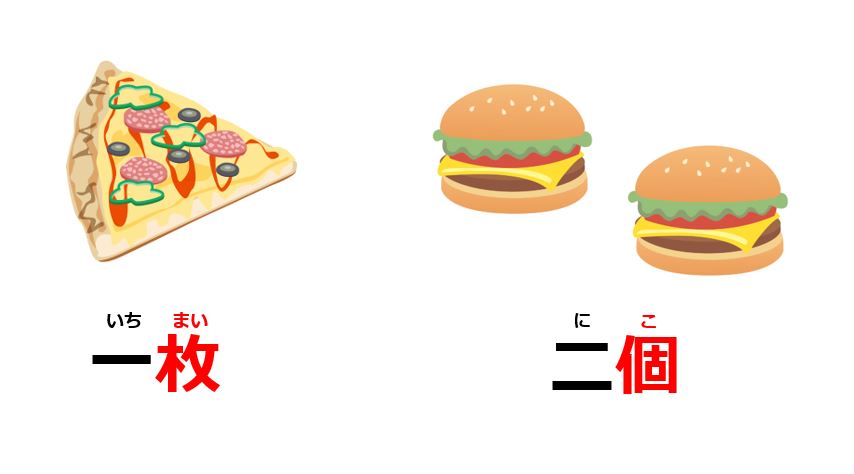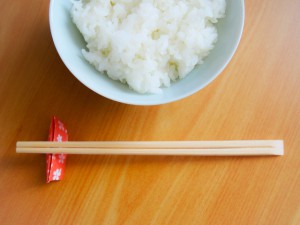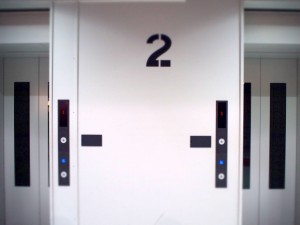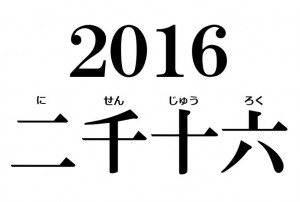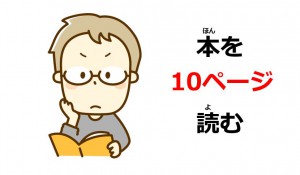Last time, you learned the Japanese counting system in terms of pronunciation. As you know now, there are two ways to count, some of which have irregular pronunciations. In this lesson, you will learn the usage depending on contexts.
Explanation for How Japanese Counters Work
When you count a car in English, you can just say “one car.” However, you cannot say “一車” in Japanese. You have to use various counters depending on what you will count. As for cars, you have to use 台 like “一台: one car.” This is one of the trickiest things with learning Japanese. There are counters for different types of objects.
Common Counters
| 個 (こ) Articles (General Goods) |
枚 (まい) Flat Objects |
本 (ほん) Long Cylindrical Objects |
|---|---|---|
 |
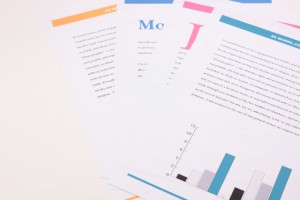 |
 |
| 台 (だい) Machines and Vehicles |
匹 (ひき) Small Animals |
冊 (さつ) Books |
 |
 |
 |
| 人 (にん) People |
階(かい) Floors |
歳 (さい) Ages |
 |
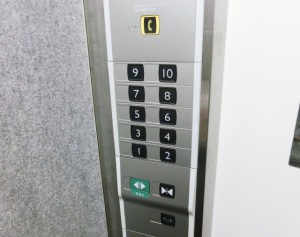 |
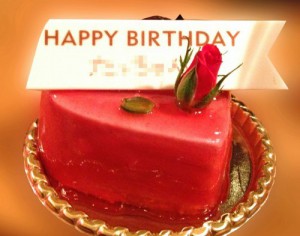 |
| 一 | 二 | 三 | 四 | 五 | 六 | 七 | 八 | 九 | 十 | |
|---|---|---|---|---|---|---|---|---|---|---|
| 個 | いっ こ |
に こ |
さん こ |
よん こ |
ご こ |
ろっ こ |
なな こ |
はっ こ |
きゅう こ |
じゅっ こ |
| 枚 | いち まい |
に まい |
さん まい |
よん まい |
ご まい |
ろく まい |
なな まい |
はち まい |
きゅう まい |
じゅう まい |
| 本 | いっ ぽん |
に ほん |
さん ぼん |
よん ほん |
ご ほん |
ろっ ぽん |
なな ほん |
はっ ぽん |
きゅう ほん |
じゅっ ぽん |
| 台 | いち だい |
に だい |
さん だい |
よん だい |
ご だい |
ろく だい |
なな だい |
はち だい |
きゅう だい |
じゅう だい |
| 匹 | いっ ぴき |
に ひき |
さん びき |
よん ひき |
ご ひき |
ろっ ぴき |
なな ひき |
はっ ぴき |
きゅう ひき |
じゅっ ぴき |
| 冊 | いっ さつ |
に さつ |
さん さつ |
よん さつ |
ご さつ |
ろく さつ |
なな さつ |
はっ さつ |
きゅう さつ |
じゅっ さつ |
| 人 | ひとり | ふたり | さん にん |
よ にん |
ご にん |
ろく にん |
なな にん |
はち にん |
きゅう にん |
じゅう にん |
| 階 | いっ かい |
に かい |
さん がい |
よん かい |
ご かい |
ろっ かい |
なな かい |
はっ かい |
きゅう かい |
じゅっ かい |
| 歳 | いっ さい |
に さい |
さん さい |
よん さい |
ご さい |
ろく さい |
なな さい |
はっ さい |
きゅう さい |
じゅっ さい |
- 一, 三, 六, 八, and 十 often have irregular pronunciations.
- The exception of 十 is officially pronounced as “じっ” like “じっこ,” “じっぽん,” and “じっぴき.” However, that’s used by mainly TV reporters and announcers.
- With age, it is more common to pronounce 二十歳 as はたち rather than にじゅっさい
As the table shows, you need to select a proper counter depending on the object, and with this the pronunciation will vary. For example, when you count air-conditioners in Japanese, you say “一台.” When you count a box of tissues, you say “一個.” When you count a pizza, you say “一枚.” This is how Japanese counters work.
Practical Usages in Reality
Do native speakers correctly use counters every time? The answer is no. We often make mistakes or intentionally use wrong ones for the sake of simplicity.
For example, when you count chopsticks, the counter: 膳 is right. However, a lot of people count chopsticks with 本. Although it’s not right, 本 is applicable because of the form of chopsticks. What we wanted to say here is that you don’t need be a perfectionist. Of course, it’s better that you can use every counter correctly, but actually, it is a fact that most native speakers can’t do it themselves.
Generic Counter: つ
From one to ten, there is an alternative way to count called the つ-method. This is very useful and can be used for generic objects. For instance, take the counters 台 and 個, both of these can be used when counting a mobile phone, because a mobile phone is both a machine and an article (general good); however, you can still use the つ method for it.
A: How many mobile phones do you have?
B: 二つです。
The above response is very natural. Note: つ-method cannot be used for animated objects such as people and animals. If you use this for people, you will look very rude.
Example
The picture shows four bottles of water. How do you think native speakers would count them? Possible answers are 本: Long Cylindrical Objects, つ: Generic Objects, and 個: Articles (General Goods). We guess that the majority of answers are 本 because of the form of the bottles, but a certain number of people count them with つ or 個. That’s one of the reasons why you don’t have to pursue perfection. It’s not necessarily that there is only one answer.
The picture shows the second floor in a building. How do you express it in Japanese? In this case, we’re sure that every Japanese person will use 階 like 二階. If specific counters are available, you should use it. With objects in which you need to judge based on the form or the attribute, e.g. when you may need to use 個, 本, 枚, and 台, the つ-method is usually applicable.
[adsense]
Time Related Expressions
Time related expressions are one of the most frequently used words in everyday life and thus we will specifically pick it up here.
Year: 年
| Year 1 | 一年 (いちねん) |
| Year 2 | 二年 (にねん) |
| Year 3 | 三年 (さんねん) |
| Year 4 | 四年 (よねん) *しねん and よんねん are wrong! |
| Year 5 | 五年(ごねん) |
| Year 6 | 六年 (ろくねん) |
| Year 7 | 七年 (しち・なな ねん) |
| Year 8 | 八年 (はちねん) |
| Year 9 | 九年 (きゅう・く ねん) |
| Year 10 | 十年(じゅうねん) |
When you express years, we assume that you will often use a much higher number like 2016. You can do this in the same way that you use the counter 年. For example, when you say 1999 in Japanese, it will be “1999年(せんきゅうひゃくきゅうじゅうきゅうねん).
昭和 era 1926 ~ 1989
平成 era 1989 ~ Present
One tricky thing is that there are two calendars in Japan. The format: 2016年(にせんじゅうろくねん) is based on western calendar while we sometimes express years in Japanese calendar like this “平成二十八年(へいせい にじゅうはちねん), which is equivalent to 2016. In everyday life, there will be no problem if you can express years in the western calendar. However, the Japanese government may require you to fill out some forms with years in the Japanese calendar. You may need to know when your birthday is in the Japanese calendar. Take it easy. There is a conversion table. *In the western calendars, numerals are common.
Month: 月
| January | 一月 (いちがつ) |
| February | 二月 (にがつ) |
| March | 三月 (さんがつ) |
| April | 四月 (しがつ) *よんがつ is wrong! |
| May | 五月 (ごがつ) |
| June | 六月 (ろくがつ) |
| July | 七月 (しちがつ) *なながつ is unnatural! |
| August | 八月 (はちがつ) |
| September | 九月 (くがつ) *きゅうがつ is wrong! |
| October | 十月 (じゅうがつ) |
| November | 十一月 (じゅういちがつ) |
| December | 十二月 (じゅうにがつ) |
It’s simpler than other languages to express months in Japanese. You can just count numbers with the counter: 月. You don’t have to memorize specific words like “January” in English.
Day: 日
| 1st | 一日 (ついたち) |
| 2nd | 二日 (ふつか) |
| 3rd | 三日 (みっか) |
| 4th | 四日 (よっか) |
| 5th | 五日 (いつか) |
| 6th | 六日 (むいか) |
| 7th | 七日 (なのか) |
| 8th | 八日 (ようか) |
| 9th | 九日 (ここのか) |
| 10th | 十日 (とおか) |
| 11th | 十一日 (じゅういちにち) |
| 12th | 十二日 (じゅうににち) |
| 13th | 十三日 (じゅうさんにち) |
| 14th | 十四日 (じゅうよっか) |
| 15th | 十五日 (じゅうごにち) |
| 16th | 十六日 (じゅうろくにち) |
| 17th | 十七日 (じゅう しち・なな にち) |
| 18th | 十八日 (じゅうはちにち) |
| 19th | 十九日 (じゅうくにち) *じゅうきゅうにち is unnatural! |
| 20th | 二十日 (はつか) |
| 21st | 二十一日 (にじゅういちにち) |
| 22nd | 二十二日 (にじゅうににち) |
| 23rd | 二十三日 (にじゅうさんにち) |
| 24th | 二十四日 (にじゅうよっか) |
| 25th | 二十五日 (にじゅうごにち) |
| 26th | 二十六日 (にじゅうろくにち) |
| 27th | 二十七日 (にじゅう しち・なな にち) |
| 28th | 二十八日 (にじゅうはちにち) |
| 29th | 二十九日 (にじゅうくにち) *にじゅうきゅうにち is unnatural! |
| 30th | 三十日 (さんじゅうにち) |
| 31st | 三十一日 (さんじゅういちにち) |
This is a little complicated in comparison with others. The counter for days of the month is 日 and you can express days by saying numbers with that like 十一日(じゅういちにち) apart from the exceptions marked in red. In writing, there is no difference, but pronunciation works very uniquely.
Now, you know how to express the date in Japanese. Let’s say the date of your birthday in Japanese. The order of dates should be YYYY年 / MM月 / DD日. In my case, 1987年2月6日(せんきゅうひゃくはちじゅうななねん / にがつ / むいか) is my birthday.
Hour: 時
| 深夜 Late Night |
1:00 AM | 一時 (いちじ) |
| 2:00 AM | 二時 (にじ) | |
| 3:00 AM | 三時 (さんじ) | |
| 早朝 Early Morning |
4:00 AM | 四時 (よじ) *し・よん じ are wrong! |
| 5:00 AM | 五時 (ごじ) | |
| 朝 Morning |
6:00 AM | 六時 (ろくじ) |
| 7:00 AM | 七時 (しちじ) *ななじ is unnatural! |
|
| 8:00 AM | 八時 (はちじ) | |
| 9:00 AM | 九時 (くじ) *きゅうじ is wrong! |
|
| 10:00 AM | 十時 (じゅうじ) | |
| 昼 Daytime |
11:00 AM | 十一時 (じゅういちじ) |
| 12:00 PM | 十二時 (じゅうにじ) | |
| 1:00 PM | 一時 (いちじ) | |
| 2:00 PM | 二時 (にじ) | |
| 3:00 PM | 三時 (さんじ) | |
| 夕方 Evening |
4:00 PM | 四時 (よじ) |
| 5:00 PM | 五時 (ごじ) | |
| 6:00 PM | 六時 (ろくじ) | |
| 夜 Night |
7:00 PM | 七時 (しちじ) |
| 8:00 PM | 八時 (はちじ) | |
| 9:00 PM | 九時 (くじ) | |
| 10:00 PM | 十時 (じゅうじ) | |
| 11:00 PM | 十一時 (じゅういちじ) | |
| 12:00 AM | 十二時 (じゅうにじ) |
When it comes to expressing hours in Japanese, we guess that one question comes to your mind; how do you identify whether it’s AM or PM? In Japanese, we have the words, “午前: AM” and “午後: PM”, and you can say like this “午前九時: 9:00AM.” However, we more commonly express time like this: 朝九時 or 朝の九時. The definition of time will vary depending on people, locations and seasons. For example, from what time until when will it be morning? You can still consider the above as the basis. For reference, in business situations, especially for emails, military time (24-hour clock) is preferred. In that case, you can just write time with the counter like this “21時,” which is equal to 午後九時, 夜九時, and 夜の九時.
Minute: 分
| 1 minute | 一分(いっぷん) いちふん is wrong! |
| 2 minutes | 二分(にふん) |
| 3 minutes | 三分(さんぷん*) |
| 4 minutes | 四分(よんぷん*) |
| 5 minutes | 五分(ごふん) |
| 6 minutes | 六分(ろっぷん) ろくふん is wrong! |
| 7 minutes | 七分(しち・なな ふん) |
| 8 minutes | 八分(はっぷん*) |
| 9 minutes | 九分(きゅうふん) *くふん is wrong! |
| 10 minutes | 十分(じゅっぷん) じゅうふん is wrong! |
When you express minutes in Japanese, be careful because you have several irregular pronunciations. The counter is 分, but you often need to pronounce it as ぷん. Regarding 三分, 四分, and 八分, some people pronounce them as さんふん, よんふん and はちふん respectively, which may be a dialect or be dependent on the generation. Thus, they are not wrong. When you express higher numbers, as you learned so far, you say a tens place number and a digit like this “二十九分 (にじゅうきゅうふん)”
Second: 秒
| 1 second | 一秒 (いちびょう) |
| 2 seconds | 二秒 (にびょう) |
| 3 seconds | 三秒 (さんびょう) |
| 4 seconds | 四秒 (よんびょう) *しびょう is wrong |
| 5 seconds | 五秒 (ごびょう) |
| 6 seconds | 六秒 (ろくびょう) |
| 7 seconds | 七秒 (しち・なな びょう) |
| 8 seconds | 八秒 (はちびょう) |
| 9 seconds | 九秒 (きゅうびょう) *くびょう is wrong! |
| 10 seconds | 十秒 (じゅうびょう) |
The good news here is that the counter 秒 is much simpler than 分. Just pay attention to 四秒 and 九秒. As always, you can express higher number like this: “三十八秒(さんじゅうはちびょう).”
Now, you know how to express specific times in Japanese. Let’s say what time it is now. In my case, it’s 夕方の四時四十七分三十五秒(よじ よんじゅうななふん さんじゅうごびょう).
Duration: 間
You can express duration by combining other time expressions with the counter 間, though some of them don’t require you to do so. Let’s check the following table.
| 年: Year | Not Necessary |
| 月: Month | Irregular |
| 週: Week | Need |
| 日: Day | Not Necessary |
| 時: Hour | Need |
| 分: Minute | Not Necessary |
| 秒: Second | Not Necessary |
| 一 | 二 | 三 | 四 | 五 | 六 | 七 | 八 | 九 | 十 | |
|---|---|---|---|---|---|---|---|---|---|---|
| ヶ月 | いっ かげつ |
に かげつ |
さん かげつ |
よん かげつ |
ご かげつ |
ろっ かげつ |
なな かげつ |
はっ かげつ |
きゅう かげつ |
じゅっ かげつ |
| 週間 | いっ しゅうかん |
に しゅうかん |
さん しゅうかん |
よん しゅうかん |
ご しゅうかん |
ろく しゅうかん |
なな しゅうかん |
はっ しゅうかん |
きゅう しゅうかん |
じゅっ しゅうかん |
| 日 | いち にち |
ふつ か |
みっ か |
よっ か |
いつ か |
むい か |
なの か |
よう か |
ここの か |
とお か |
| 時間 | いち じかん |
に じかん |
さん じかん |
よ じかん |
ご じかん |
ろく じかん |
なな じかん |
はち じかん |
く じかん |
じゅう じかん |
Regarding 年, 分, and 秒, the pronunciations are the same as the time expressions and so we have omitted them from the table above. You can express a moment or a duration by using the same form, e.g. 2000年 can mean “year 2000” or “2000 years.” If you would like to clearly express duration, you can attach to 間. 2000年間 only means “2000 years.” As for 日, the concept is the same, but the pronunciation of 一日 needs to be changed. ついたち is never used to express duration. When it comes to 時 and 週, you cannot omit 間. Thus, please consider 週間 and 時間 as the counters.
Example
五年(間): 5 years
十二週間: 12 weeks
二十四時間: 24 hours
五十分(間): 50 minutes
三十八秒(間): 38 seconds
Note: When you express duration using two units like “10 hours and 30 minutes,” the counter: 間 is always omitted except for 週間 and 時間
Correct: 十時間三十分
Wrong: 十時間三十分間
You can also express the above by using the particle と like 十時間と三十分. When you use big and small units together like 1 year and 1 week, this expression is more common.
Unnatural: 一年一週間
Natural: 一年と一週間
What is ヶ?
Let’s dig into the irregular one: 月. When you express duration by using 月, you have to attach ヶ, which is small Katakana of ケ, but pronounced as か, and you also need to pronounce 月 as げつ. The reason is still controversial. Thus, please just memorize that you need to pronounce “numbers + かげつ” to express duration in months. More annoyingly, there are some cases that small Katakana カ, or Hiragana か is used instead of ヶ. All of them are just pronounced as “か.”
五ヶ月(間): 5 months
六ヵ月(間): 6 months
七か月(間): 7 months
Summary
- You need to choose a proper counter depending on what you will count.
- Pronunciations of numerals will vary depending on counters.
- つ-method is applicable for objects in which you need to judge based on the form or the attribute.
Have you found learning Japanese to be difficult? Don’t worry. This is one of the trickiest things. In practice, native speakers will definitely understand your speech even if you make a mistake in counters or pronunciation. As the saying goes, “Practice makes perfect.” Try to start expressing numbers in Japanese in everyday life. Next, you will learn how to use numerals in a sentence.

